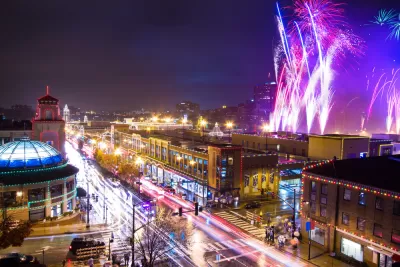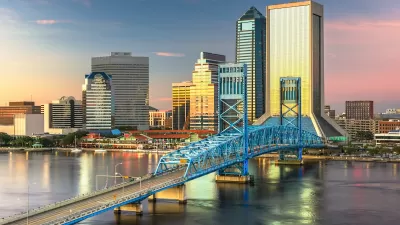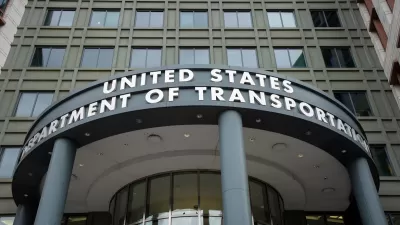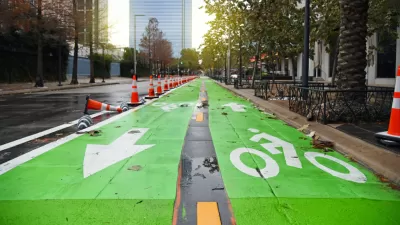The city has taken some steps to address gaps in pedestrian infrastructure, but fatalities are growing as the most disadvantaged communities continue to lack safe walking conditions.

Reporting for KCUR, Savannah Hawley raises questions about pedestrian safety in Kansas City, where cars have killed 44 pedestrians so far this year, up from 33 at the same time last year. “Of the 1,485 crash fatalities in the Kansas City metro over the last five years, pedestrians made up 13% — or more than 190 deaths — despite only accounting for about 6% of travelers,” Hawley writes. “Kansas City council member Melissa Robinson said that conditions for pedestrians are especially dire in northeast Kansas City, where last week's accident took place.”
Part of the problem stems from the way the city, until recently, responded to sidewalk maintenance requests. After a long waiting period, local property owners were tasked with paying for repairs, which often left poorer neighborhoods unable to make needed repairs. The city has made efforts to ensure more equitable distribution of city resources for repairing sidewalks and roads, such as a 2017 property tax increase to fund infrastructure repairs. “While improvements have been made, Robinson is firm that every change needs to be made with an eye on equity. People in poorer areas who have no choice but to walk and use public transit need these changes the most.”
The article also addresses the tension between bike lanes and sidewalks, which are sometimes pitted against each other. According to Michael Kelley, policy director at BikeWalkKC, “The bigger question is why are we repaving the street for the third time while the sidewalk is busted, and not including safer infrastructure that we know could make it safer for everyone?”
FULL STORY: Another person in Kansas City was killed by a car. What is the city doing about pedestrian safety?

Study: Maui’s Plan to Convert Vacation Rentals to Long-Term Housing Could Cause Nearly $1 Billion Economic Loss
The plan would reduce visitor accommodation by 25,% resulting in 1,900 jobs lost.

North Texas Transit Leaders Tout Benefits of TOD for Growing Region
At a summit focused on transit-oriented development, policymakers discussed how North Texas’ expanded light rail system can serve as a tool for economic growth.

Why Should We Subsidize Public Transportation?
Many public transit agencies face financial stress due to rising costs, declining fare revenue, and declining subsidies. Transit advocates must provide a strong business case for increasing public transit funding.

How to Make US Trains Faster
Changes to boarding platforms and a switch to electric trains could improve U.S. passenger rail service without the added cost of high-speed rail.

Columbia’s Revitalized ‘Loop’ Is a Hub for Local Entrepreneurs
A focus on small businesses is helping a commercial corridor in Columbia, Missouri thrive.

Invasive Insect Threatens Minnesota’s Ash Forests
The Emerald Ash Borer is a rapidly spreading invasive pest threatening Minnesota’s ash trees, and homeowners are encouraged to plant diverse replacement species, avoid moving ash firewood, and monitor for signs of infestation.
Urban Design for Planners 1: Software Tools
This six-course series explores essential urban design concepts using open source software and equips planners with the tools they need to participate fully in the urban design process.
Planning for Universal Design
Learn the tools for implementing Universal Design in planning regulations.
Ascent Environmental
Borough of Carlisle
Institute for Housing and Urban Development Studies (IHS)
City of Grandview
Harvard GSD Executive Education
Toledo-Lucas County Plan Commissions
Salt Lake City
NYU Wagner Graduate School of Public Service





























